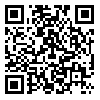Volume 57, Issue 2 (8 1999)
Tehran Univ Med J 1999, 57(2): 53-59 |
Back to browse issues page
Download citation:
BibTeX | RIS | EndNote | Medlars | ProCite | Reference Manager | RefWorks
Send citation to:



BibTeX | RIS | EndNote | Medlars | ProCite | Reference Manager | RefWorks
Send citation to:
Ramezani F, Barooti E, Khalaj Farahani F, Hashemi S. Effective factors contraceptive use by logistic regression model in Tehran, 1996. Tehran Univ Med J 1999; 57 (2) :53-59
URL: http://tumj.tums.ac.ir/article-1-1474-en.html
URL: http://tumj.tums.ac.ir/article-1-1474-en.html
Abstract: (6174 Views)
Despite unwillingness to fertility, about 30% of couples do not use any kind of contraception and this will lead to unwanted pregnancy. In this clinical trial study, 4177 subjects who had at least one alive child, and delivered in one of the 12 university hospitals in Tehran were recruited. This study was conducted in 1996. The questionnaire included some questions about contraceptive use, their attitudes about unwantedness or wantedness of their current pregnancies. Data were analysed using a Logistic Regrassion Model. Results showed that 20.3% of those who had no fertility intention, did not use any kind of contraception methods, 41.1% of the subjects who were using a contraception method before pregnancy, had got pregnant unwantedly. Based on Logistic Regression Model age, education, previous familiarity of women with contraception methods and husband's education were the most significant factors in contraceptive use. Subjects who were 20 years old and less or 35 years old and more and illeterate subjects were at higher risk for unuse of contraception methods. This risk was not related to the gender of their children that suggests a positive change in their perspectives towards sex and the number of children. It is suggested that health politicians choose an appropriate model to enhance the literacy, education and counseling for the correct usage of contraceptives and prevention of unwanted pregnancy.
Keywords: Contraceptive use, Gender of children
| Rights and permissions | |
 |
This work is licensed under a Creative Commons Attribution-NonCommercial 4.0 International License. |





